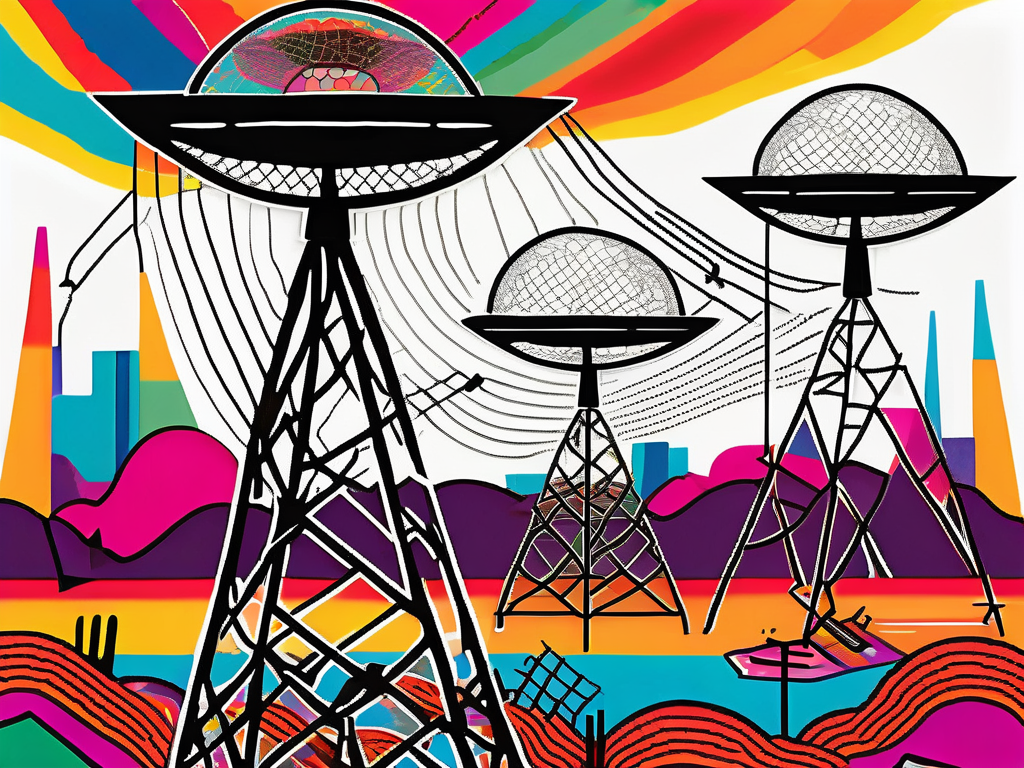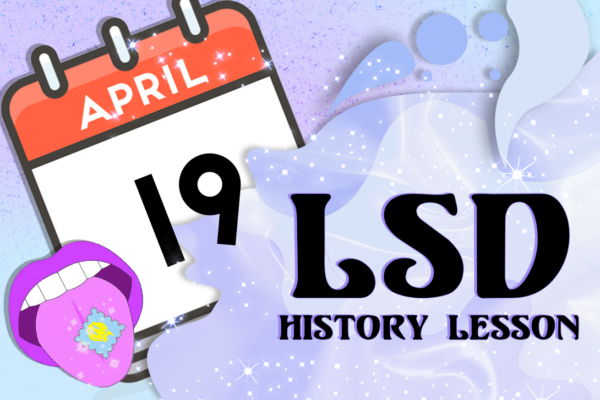
The era of the Cold War was marked by intense political tension, espionage, and a race for technological supremacy between superpowers. Among the more clandestine tactics explored during this time were psychedelic experiments conducted by military organizations. This article delves into the genesis, processes, impacts, ethical controversies, and legacy of these intriguing and controversial experiments.
The Genesis of Psychedelic Experiments
The Motivation Behind the Experiments
The military’s interest in psychedelics can be traced back to a desire for utilitarian benefits in warfare and intelligence gathering. Leaders believed these substances could enhance interrogation techniques, improve soldier performance, and even provide insights into the psyche of potential enemies. The scientific community was witnessing a burgeoning curiosity surrounding substances like LSD (lysergic acid diethylamide) and psilocybin, and the military aimed to harness this emerging knowledge.
As the United States sought a comparative edge over the Soviet Union, the potential applications of psychedelics became alluring. The idea was that these substances could not only alter the perceptions of individuals but potentially reshape their cognitive functions, making them more pliable for intelligence purposes. This fascination was not limited to the military; it also permeated various sectors of society, including academia and the counterculture movement, which began to explore the therapeutic benefits of these substances. The duality of the military’s interest and the burgeoning psychedelic culture created a complex landscape where the potential for both innovation and exploitation coexisted.
Key Figures in the Initiation of the Experiments
Several prominent figures played pivotal roles in launching the military’s psychedelic programs. Scientists like Dr. Sidney Gottlieb of the CIA’s MKUltra program spearheaded these initiatives, exploring the effects of mind-altering substances as tools for psychological manipulation. Gottlieb’s work was shrouded in secrecy, often conducted in clandestine settings, which raised ethical questions that would echo through the decades. His belief that psychedelics could unlock the secrets of the human mind led to a series of experiments that often disregarded the well-being of participants.
Additionally, notable psychologists and researchers, including Timothy Leary and Richard Alpert (later known as Ram Dass), were drawn into these explorations as the line between benevolent research and dubious ethical practices began to blur. Leary, in particular, became a vocal advocate for the use of psychedelics in expanding consciousness, promoting the idea that these substances could lead to profound personal and societal transformation. His charismatic approach attracted a following, but it also put him at odds with the establishment, leading to a fascinating yet contentious dialogue about the role of psychedelics in both personal liberation and government control. This tension highlighted the broader cultural shifts occurring in the 1960s, as traditional norms were challenged and the quest for deeper understanding became a rallying cry for a generation.
The Process of Psychedelic Experimentation
The Selection of Subjects
The selection of subjects for these experiments was often haphazard and ethically questionable. Military personnel, often without fully understanding the implications, were sometimes coerced or volunteered for testing procedures that involved high doses of psychedelics.
Moreover, civilians were also used as subjects, frequently recruited from hospitals or prisons, leading to further ethical dilemmas. The notion of informed consent was grossly undermined as individuals were often uninformed about the risks involved. Many subjects were vulnerable populations, including those struggling with mental health issues or addiction, raising significant moral questions about the exploitation of their circumstances for experimental purposes.
In some cases, the selection process was influenced by the desire to achieve specific outcomes, with researchers favoring individuals who they believed would yield the most dramatic results. This selective bias not only compromised the integrity of the research but also highlighted the power dynamics at play, as those in authority dictated who was deemed suitable for participation. The lack of oversight and regulation during this period allowed for a wide range of abuses, further complicating the legacy of psychedelic research.
The Administration of Psychedelics
The administration of psychedelics was conducted under controlled conditions, though the environments were frequently less than ideal. Many experiments took place in isolated settings designed to measure reactions, such as sensory deprivation tanks or confined rooms.
The effects of these substances were monitored by research teams who documented everything from psychological reactions to physical responses. The overarching aim was to quantify how these mind-altering drugs could affect memory, perception, and overall mental state. Researchers employed various methodologies, including interviews and psychological assessments, to gauge the immediate and long-term impacts of the substances on participants.
Additionally, the choice of psychedelic compounds varied widely, from LSD and psilocybin to mescaline, each with its own unique profile of effects. The administration protocols also differed, with some studies opting for intravenous delivery while others utilized oral ingestion. This variation created a complex landscape of data, as the subjective experiences of participants could be influenced by numerous factors, including dosage, individual psychology, and the setting of the experiment itself. As a result, the findings of these experiments often yielded conflicting results, complicating the understanding of psychedelics’ true potential and risks.
The Impact of Psychedelic Experiments on Subjects
Immediate Effects of the Experiments
The immediate effects of psychedelic experiments were often dramatic and varied widely among subjects. Some reported profound experiences, including altered states of consciousness, heightened awareness, and spiritual revelations. Others faced overwhelming anxiety, paranoia, or disorientation.
This spectrum of experiences underscored the unpredictable nature of psychedelics, showcasing both their potential and dangers. Many participants were left grappling with these altered perceptions long after the effects wore off, indicating the drugs’ powerful influence. For some, the experience was akin to a journey through the depths of their psyche, revealing hidden fears and desires. This exploration could lead to moments of clarity, where individuals felt a deep connection to the universe or a newfound understanding of their personal struggles. Conversely, others found themselves trapped in a cycle of negative thoughts, as the vivid hallucinations and emotional turmoil became overwhelming, leaving them questioning their grip on reality.
Long-Term Consequences for Subjects
The long-term consequences were equally significant. Numerous subjects experienced ongoing psychological issues, from flashbacks to deep-seated trauma rooted in their psychedelic experiences.
Researchers later examined these outcomes, recognizing that the effects of LSD and similar substances could last considerably longer than anticipated. Many individuals reported lifelong changes in mood, behavior, and relationships, thereby raising critical questions about the long-term consequences of such experiments. Some subjects found themselves more open to new experiences and ideas, often attributing this shift to their psychedelic journeys. This openness could enhance creativity and foster a greater appreciation for art and nature. However, for others, the aftermath included persistent anxiety and a struggle to reintegrate into everyday life, as they felt disconnected from their previous selves. The complexity of these outcomes highlights the need for further research into the psychological ramifications of psychedelic substances, as well as the importance of providing adequate support for participants post-experimentation.
Ethical Considerations and Controversies
The Debate on Consent in the Experiments
The ethical considerations surrounding these experiments are vast and complex. Consent was a major point of contention, as many subjects were neither fully informed about the experiments nor capable of giving genuine consent.
This lack of ethical rigor turned the experiments into a focal point for heated debates about the morality of using human subjects in psychological research. Critics argued that the military’s desire for knowledge and control overshadowed the fundamental human rights of those involved. Furthermore, the coercive environment in which many of these experiments took place raised questions about the power dynamics at play, as vulnerable populations were often targeted. The implications of such practices extend beyond the immediate harm inflicted on participants; they challenge the very foundation of trust that is essential for ethical research.
The Aftermath and Public Reaction
The aftermath of the military’s psychedelic experiments prompted significant public outcry as details emerged about the extent and nature of such activities. Media coverage brought attention to the unsettling practices, leading to calls for regulatory changes.
As a response, governmental organizations began to evaluate their ethical standards, ultimately resulting in stricter guidelines governing human subject research. The public reaction was a mix of fascination and horror, leading to a broader discourse about the wartime ethics of psychological experimentation. This period also sparked a wave of activism, with various advocacy groups emerging to champion the rights of research subjects. The revelations not only ignited debates in academic circles but also influenced popular culture, inspiring films, literature, and art that grappled with the moral implications of such experiments. The legacy of these discussions continues to resonate today, as society navigates the balance between scientific advancement and ethical responsibility.
The Legacy of Cold War Psychedelic Experiments
Influence on Modern Military Techniques
The legacy of these experiments extends into modern military practices, where psychological tactics continue to play a significant role in warfare and intelligence operations. While the overt use of psychedelics has decreased, insights gained from these studies inform contemporary understanding of mental health, cognitive therapy, and resilience training.
The military now emphasizes the importance of psychological well-being, integrating lessons about mental health into training programs, although often detached from the controversial past of psychedelic research.
Lessons Learned and Changes in Ethical Guidelines
One of the most profound outcomes of the Cold War psychedelic experiments is the establishment of stricter ethical guidelines for research involving human subjects. Institutions now emphasize informed consent, transparency, and protection of vulnerable populations.
The debate surrounding these practices has ushered in a more cautious approach to psychological research, ensuring that autonomy and ethics are at the forefront of scientific inquiry. In retrospect, the morally ambiguous actions of the past serve as cautionary tales for contemporary researchers in the field of psychology and beyond.
In conclusion, the history of Cold War psychedelic experiments reflects a unique intersection of military strategy, psychological exploration, and ethical questioning, leaving an indelible mark on both military practices and research methodologies.








